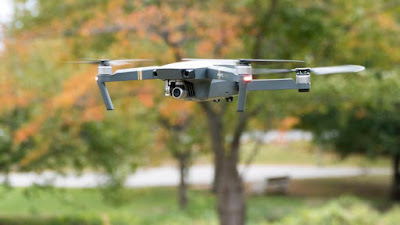DJI Mavic Pro is not exactly a toy, rather, it is a serious flying package for consumer
we’ve determined exactly what makes the perfect drone tick — or fly
To help cut through the noise, we’ve determined exactly what makes the perfect drone tick — or fly. The right UAV should first and foremost be able to fly with ease and focus and shouldn’t impede clear video. Of course, a drone should be equipped with a quality camera, as well as means of controlling the camera. Finally, the perfect drone should be fun to control and be loaded with the high-tech advancements needed to make piloting a breeze.

there’s many great quadcopter options on the market (including DJI’s Phantom 4, which we will get into below), the Mavic Pro is the only one that offers a compact, travel friendly design without sacrificing function or quality. Unlike other premium drones that require tedious disassembling before being crammed in your luggage, the Mavic Pro is designed to fold in on itself and fit safely in even the tightest bag. while the travel-ready aspect already gives the Mavic Pro a leg up, its engineering sends it over the top.
If you’re aspiring to make the most out of your drone purchase, chances are you’ll be taking it on the road. While
First, let’s take a look at the camera We’ve all seen those amazing aerial videos taken by modern drones, these high flying quadcopters capture a view of the world we may have never seen before. DJI is one of the leading drone manufacturers to put cameras in the sky and their amazingly capable Mavic Pro is one of the easiest drones to fly, Want more options? Here are the best drones for taking photos and video from the air. The compact size and light weight make the Mavic Pro an ideal drone to pack around, but a small size means a small camera, which means poor photos and video quality, right? Let’s find out in this feature focus on the camera of the DJI Mavic Pro..
Technical details
With a starting price of about $1000, the DJI Mavic Pro is not exactly a toy, rather, it is a serious flying package for consumer level fliers that want to put a camera in the sky. The camera in question this time out is a 12MP shooter that captures 4K video.
Diving deep, the camera on the Mavic Pro handles a handful of shooting resolutions, and speeds, with video capture up to C4K (4096 x 2160) at 24 fps (frames per second,) down to 720p capture, but that 1280 x 720 resolution starts at 24 fps and can boost up to 120 fps.
If slow motion video is your desire, you can capture, as I say, up to 120 fps at 720p and up to 96 fps at full HD, 1920 x 1080. The camera itself is a 1/2.3-inch CMOS sensor with a total pixel count of 12.71 M, capturing photos at 4000 x 3000 pixels. The lens is a 28 mm focal length with 78.8 degree field of view at f/2.2.
Truth is, the camera spec sheet is almost as long as a full sized camera. Let’s lay it all out for you
| DJI Mavic Pro | |
|---|---|
| Camera | 1/2.3" CMOS 12MP 4K |
| Lens | FOV 78.8° 28 mm f/2.2 (Roughly equivalent to 35 mm) |
| ISO | Video ISO 100 - 3200 Photo ISO 100 - 1600 |
| Shutter | 8s - 1/8000s |
| Video recording | MP4 or MOV Cinematic 4K - 24fps (4096x2160) 4K - 24/25/30fps (3840x2160) 2.7K - 24/25/30fps (2704x1520) FHD - 24/25/30/48/50/60/96fps (1920x1080) HD - 24/25/30/48/50/60/120fps (1280x720) |
| Photo capture | 4000 x 3000 resolution 4:3 4000 x 2250 resolution 16:9 Single shot or burst 3/5/7 fps |
| Storage | Up to 64GB micro SD Class 10 and/or UHS-1 minimum, UHS-3 recommended for 4K video |
| Remote controller | Max 4.3 mile operating range Video record button Photo capture button Camera tilt scroll wheel Camera exposure value scroll wheel Center focus and auto exposure button |
| Mobile support | FPV video streaming 720p by default, 1080p optional Tap to focus Full manual controls available |
| Gimbal | Shock mounted 3-axis motorized -90° to +30° vertical pitch 0° or 90° roll (Landscape or Portrait) |
Comments
Post a Comment